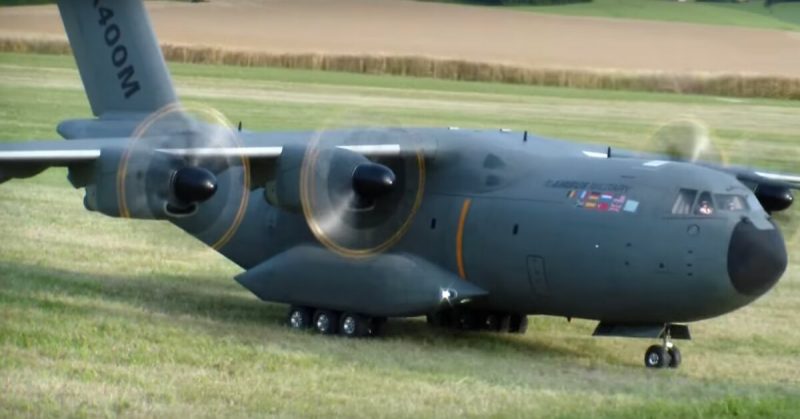Every two years since 2011, the biggest and best remote control airplanes have been flown at the Airlinertraffen gathering in Oppingen, in Germany. From military models to commercial jetliners, dozens of these remarkable machines hit the skies.
Remote controlled aircraft have been around for some time. They have their roots in the later years of the 19th Century, when the first examples of this technology began to appear. These were electronically guided airships, filled with hydrogen, and they were moved with a spark-emitted radio signal. Towards the end of the 1800’s, these new inventions would fly around the interiors of theaters, as part of a music hall act.
As the 20th Century began and Europe was engulfed in conflict, the concept of aircraft that could be operated from the ground was understandably of interest to military forces in several nations. In 1916, two years into the war, the United States Navy started developing prototypes for an unmanned aerial bomb.
The result of their work proved to be less than effective. It weighed 175 pounds and proved to be very inaccurate when used on specific targets. Funding for these remote controlled aerial devices soon dried up, and the Navy shelved their plans.
However, many years later, a model airplane enthusiast called John Stuart Foster Jr. proposed the idea of remote controlled aircraft for military use. The Defense Advanced Research Projects Agency approved his designs and by 1973 they had build the basic models. Though relatively crude by today’s standards, they proved to be an essential step towards the modern drones and remote controlled machines we have today.
While many of these devices have become associated with military actions, especially with the advent of drone warfare in the Middle East, the technology is still extremely popular for civilian use. This is demonstrated at events like Oppingen’s Airlinertraffen festival.
A wide variety of demonstrations and displays take place each year at the gathering. In 2015, Hannes Heppe flew a remote control plane he made himself – an Airbus A400M – at this event. The crowd was delighted when he dropped parachutes from the Airbus during its flight.
The real-life Airbus A400 Atlas is a large aircraft that primarily functions in a transportation role, referred to as a tactical air-lifter. However, if equipped with the right tools and resources, they are also capable of providing medical evacuation and aerial refueling.
Heppe’s model has a 12-foot wingspan, weighs 83 lbs, and uses a 6000mAh six-cell battery pack for each of its four motors. Its maximum flight duration is 7 minutes.
The real Airbus A400M was built through a partnership of several countries and continues to be a multi-international plane. It was designed to “transport what the C130 cannot to places that the C17 can’t”, meaning it was required to carry a substantial number of people for long distances but be able to land on soft, short runways.
The project’s conception occurred in the early 1980s, but due to delays, the maiden flight did not happen until 2009. The French Air Force directed the A400M’s first operational flight in December 2013.
Here are the stats on the full-size Airbus A400M:
- Cargo and troop transport, medical evacuation
- Fly by wire flight control system with sidestick controllers
- Flight envelope protection
- Full glass cockpit
- Hydraulic system with 3000 psi channels
- Two electrical systems rather than third hydraulic system
- Carbon fiber reinforced plastic wings
- Eight blade scimitar propeller
- Four Europrop TP400-D6 engines rated at 11,000 hp each turning in opposing directions
- Deployable baffles at the front of the rear side doors to protect paratroopers from being hit by the craft before hitting the slipstream
- Crew capacity of four
- Holds 81,600 lbs including an area for 116 fully equipped troops, 66 stretchers, and 25 medics
- 148 feet in length with a wingspan of 139 feet
- Carries up to 111,000 lbs in internal fuel
- Cruising speed: 485 mph
- Range: up to 3450 nmi
